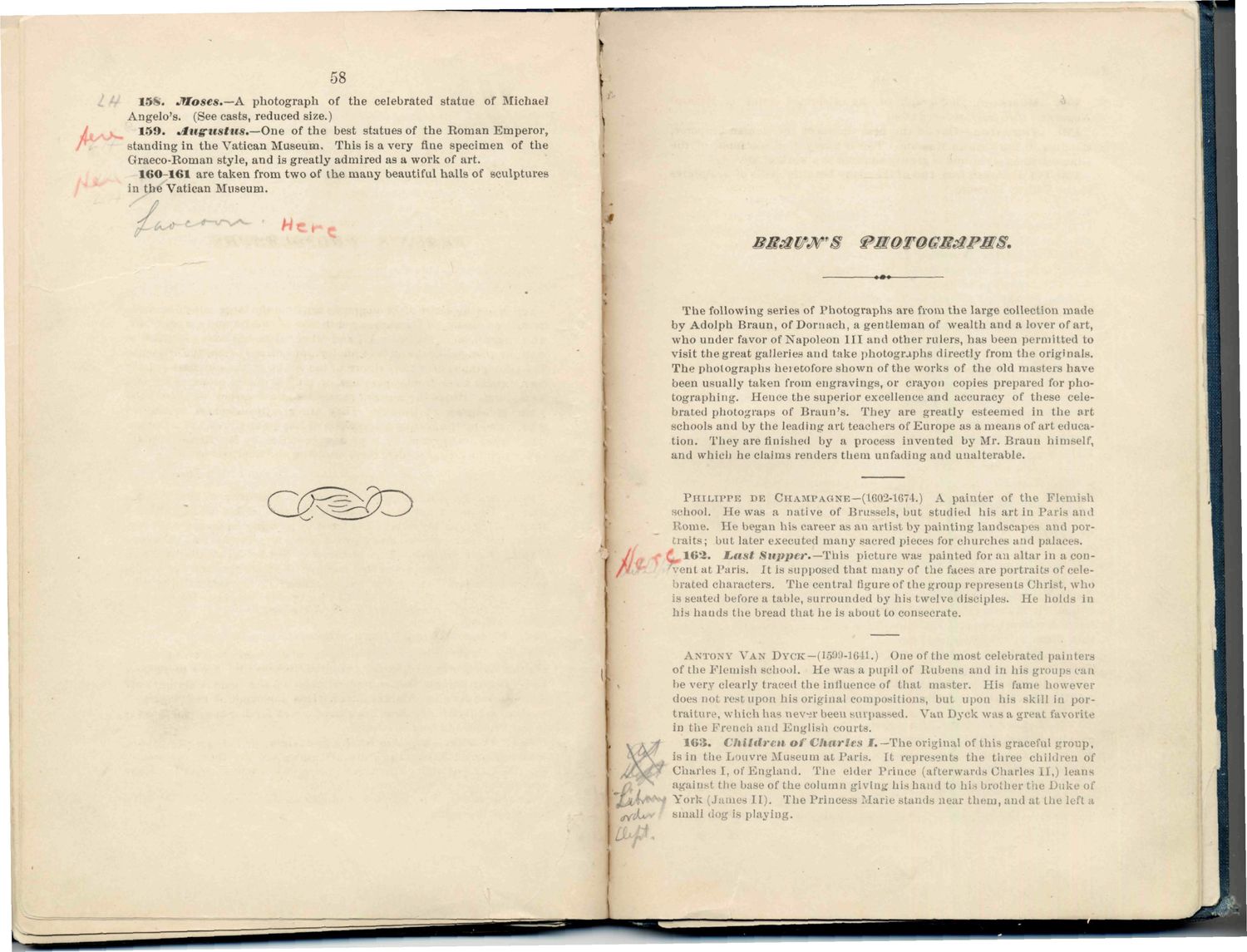| |
| |
Caption: Book - Gregory Art Collection Catalog (Gregory)
This is a reduced-resolution page image for fast online browsing.

EXTRACTED TEXT FROM PAGE:
58 M^~ 15S. JWoses.—A photograph of the celebrated statue of Michael Angelo's. (See casts, reduced size.) 159. .tiifftistns.—One of the best statues of the Roman Emperor, standing in the Vatican Museum. This is a very fine specimen of the Graeco-Boman style, and is greatly admired as a work of art. 1 6 0 - 1 6 1 are taken from two of the many beautiful halls of sculptures in the Vatican Museum. BB£UNfB &EQTQGE&PBS. The following series of Photographs are from the large collection made by Adolph Braun, of Dornaeh, a gentleman of wealth and a lover of art, who under favor of Napoleon I I I and other rulers, has been permitted to visit the great galleries and take photographs directly from the originals. The photographs heietofore shown of the works of the old masters have been usually taken from engravings, or crayon copies prepared for photographing. Hence the superior excellence and accuracy of these celebrated photograps of Braun's. They are greatly esteemed in the art schools and by the leading art teachers of Europe as a means of art education. They are finished by a process invented by Mr. Braun himself, and which he claims renders them unfading and unalterable. . P H I L I P P E D E CHAMPAGNE—(1603-1674.) A painter of the Flemish school. He was a native of Brussels, but studied his art In Paris and Rome. He began his farcer as an artist by painting landscapes and portraits; but later executed many sacred pieces for churches and palaces. f^ 1 6 2 . Last Supper.— This picture was painted for an altar in a con'veut at Paris. It is supposed that many of the faces are portraits of celebrated characters. The central figure of the group represents Christ, who is seated before a table, surrounded by his twelve disciples. He holds in his hands the bread that he is about to consecrate. w 1 ANTONY V A N DYCK— (1589-1641.) One of the most celebrated painters of the Flemish school. He was a pupil of Rubens and in his groups can be very clearly traced the influence of that master. His fame however does not rest upon his original compositions, but upon his skill in portraiture, which has never been surpassed. Van Dyck was a great favorite in the French and English courts. 1 6 3 . Children of Charles /.—The original of this graceful group, is in the Louvre Museum at Paris. It represents the three children of Charles I, of England. The elder Prince (afterwards Charles II,) leans against (lie base of the column giving his hand to bis lirolher the Duke of York (James I li. The Princess Marie stands near them, and at the left a small dog is playing.
| |